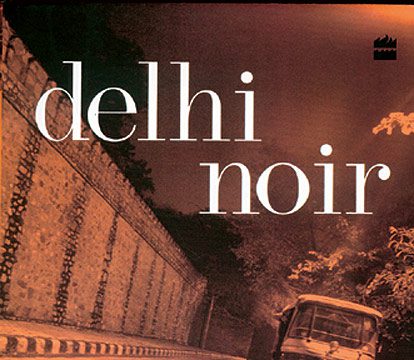Finally, we have a book of stories set in Delhi that does not focus on the romance of its bygone times, its ruins or its tryst with the Raj and — blessed relief — that’s not written for white people. Editor Hirsh Sawhney describes Delhi Noir as social realism, but it’s actually far more interesting and diverse, stretching to dark dystopian brooding as well as happy-ending escapist fantasies. Most of the stories are tightly plotted and carry the signature sting-in-the-tail of the hard-boiled detective fiction genre. The highlights include Uday Prakash’s matter-of-fact account of a romance between a city sanitation worker and a servant in Rohini, a just-so story of ill-gotten gains and a material girl. Then there is Irwin Allan Sealy’s wonderfully etched, vigilante auto-rickshaw driver who metes out justice on the North Delhi Ridge. Manjula Padmanabhan fast forwards to Delhi 2050, divided between gleaming skyscrapers and a no-go periphery including the Bhalswa landfill, where seemingly untouchable super-cops meet their comeuppance from unlikely quarters. Current anxieties about global pandemics fuel this tale’s final moral about the vulnerabilities that lurk beneath the surface of seeming invincibility.
The collection’s geographical coverage of Delhi is not uniform; South Delhi gets the most attention, perhaps because it’s closest to home for many of the writers. Ruchir Joshi spins an everyday occurrence like neighbourhood tensions over car parking in Nizamuddin into a revenge fantasy that captures the class dynamics in encounters between upper-middle-class men and Dilli Pulis. Another story that rings true in its depiction of Delhi’s cultural nuances is Siddharth Chowdhury’s tale set around Delhi University’s north campus — a world where Bihari students join hands with the aptly-named Zoravar Singh Shokeen, property-dealer and small-time thug, taking to intimidation with style and gusto. Honourable mentions include Tabish Khair’s account of the sceptical reporter who delves beneath the surface of a sob-story and is left unsettled, a story that travels from Jantar Mantar to rural Bihar, reminding us of the continuing links between the city and the countryside. Meera Nair manages to deftly delineate the texture and rhythm of life on the street in her story set in the Inter-State Bus Terminal. Faithful to the hard-boiled tradition, the police feature prominently and unfavourably, as does illicit sex with neighbourhood aunties and call girls who double as spies. All in all, this is an en-grossing and enjoyable encounter with the darker side of Delhi.




